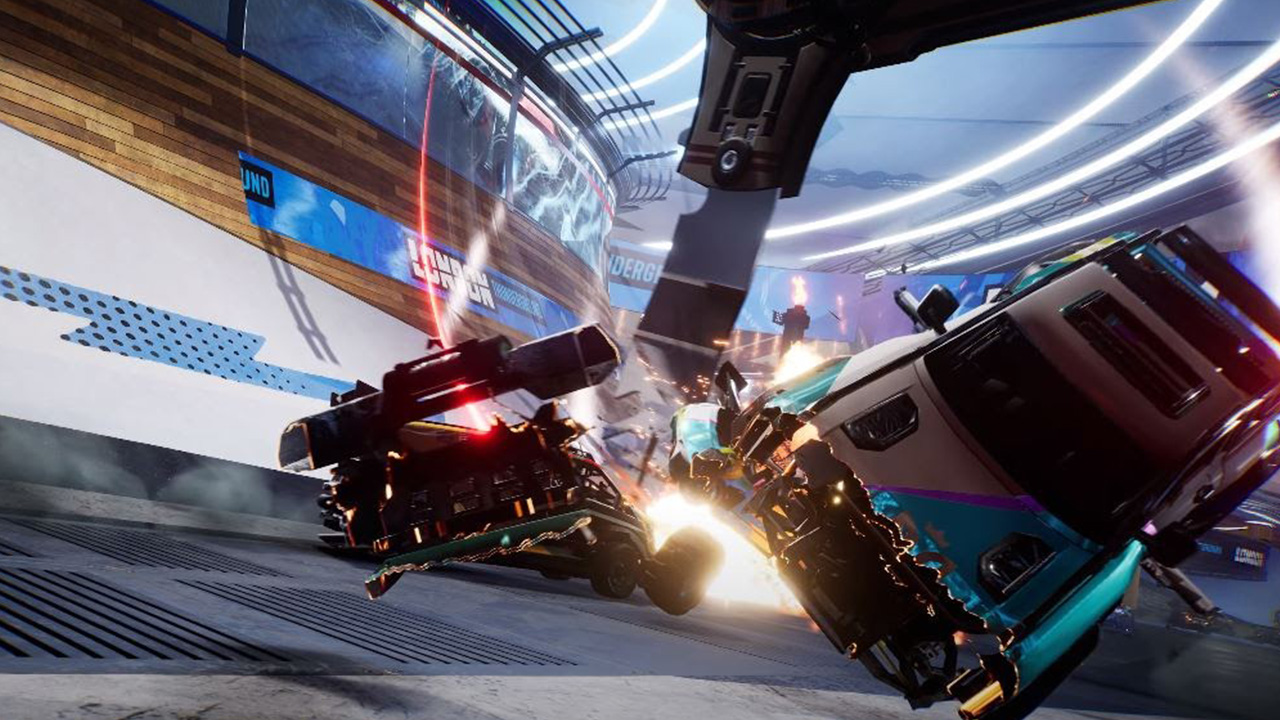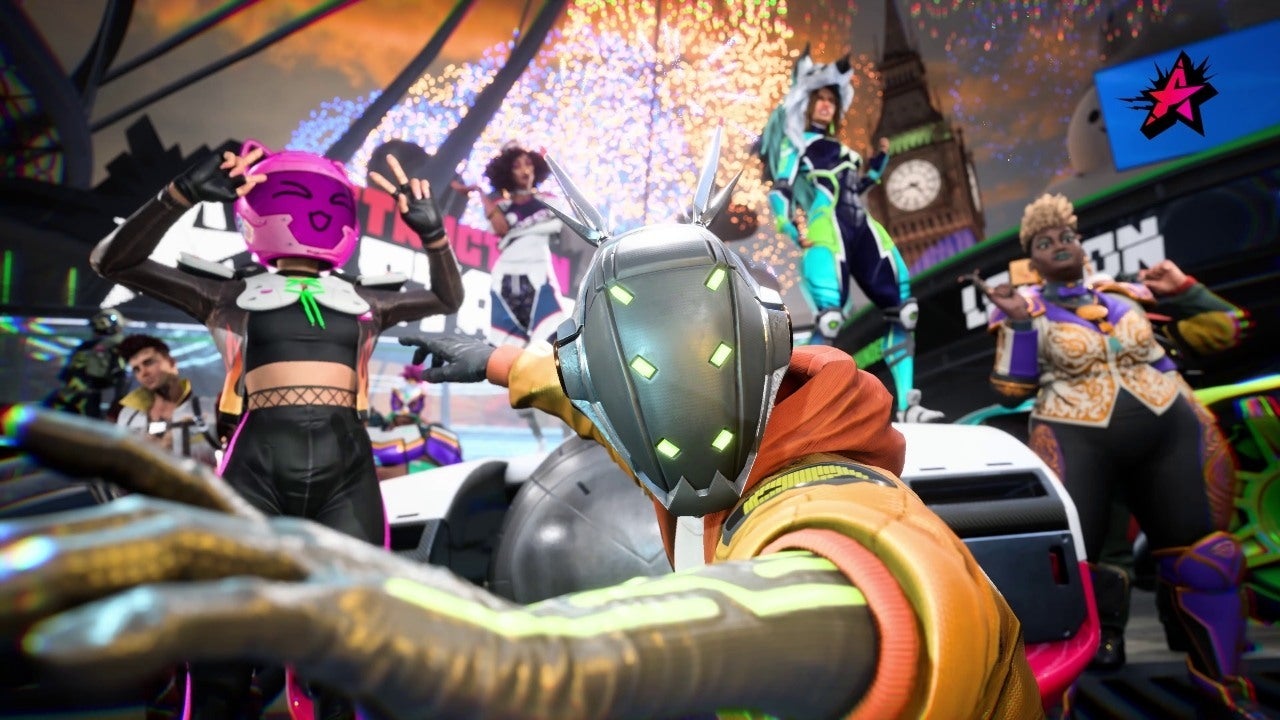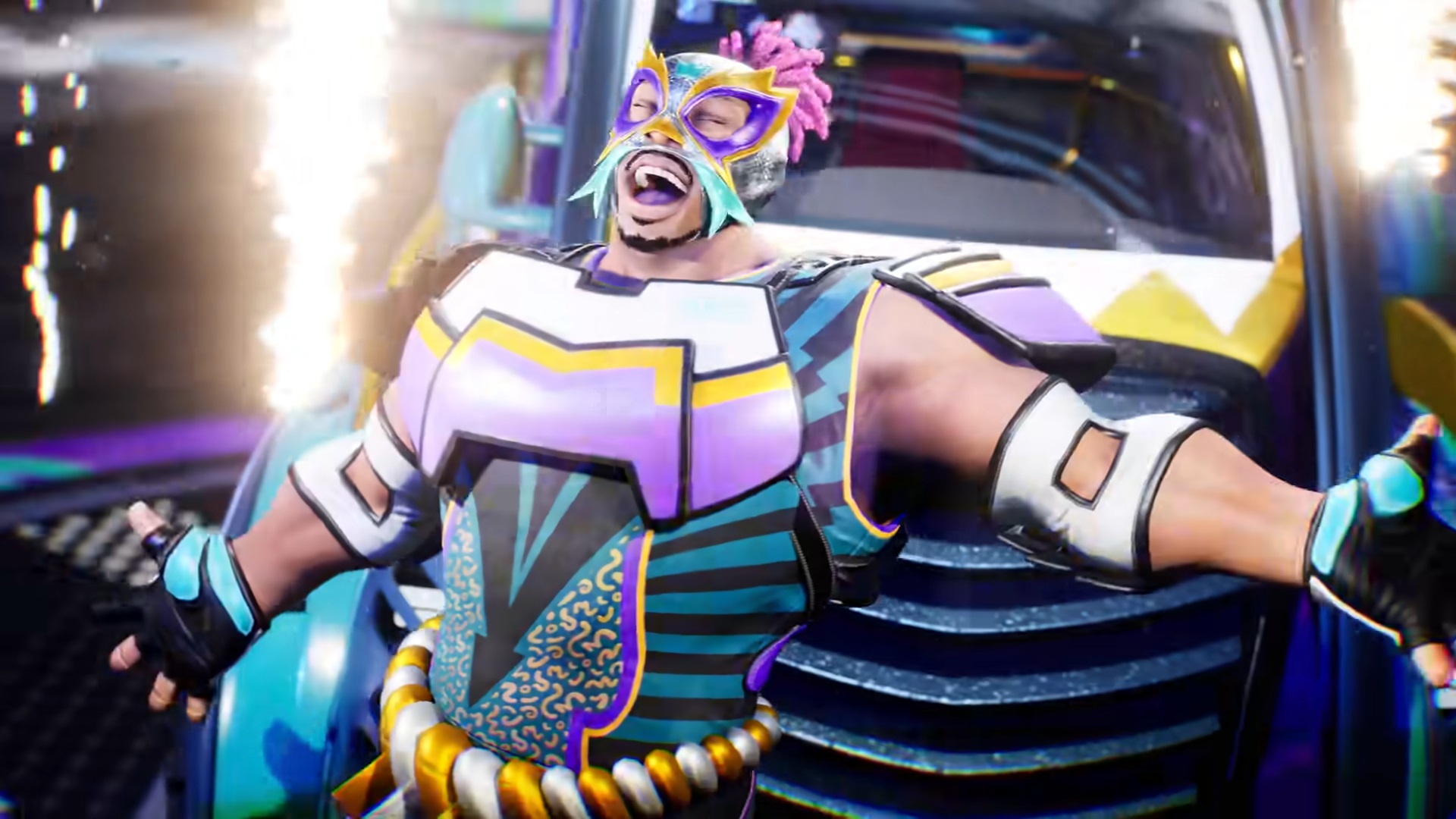Title – Destruction AllStars
Platforms – PS5
Release Date – February 2nd, 2021
Developer – Lucid Games
Publisher – Sony Interactive Entertainment
MSRP – $9.99
ESRB – T for Teen
Disclaimer – This product is being reviewed on the PlayStation 5. A review copy was provided by the Gaming Instincts staff for the purpose of this review. This review may also contain spoilers for certain gameplay and story elements. Watch at your own risk, you have been warned. Gaming Instincts is an Amazon Affiliate and does gain financial benefits if you choose to purchase this product on this page.
Destruction AllStars pitches itself as a mix of Twisted Metal’s frantic car combat, Overwatch’s personable characters, and Rocket League’s skilled-based gameplay. The hectic multiplayer arena spices up the demolition derby by allowing players to exit vehicles at any time. AllStars capitalizes on this straightforward mechanic to create chaotic, fun multiplayer experiences.
However, the exceptional gameplay is not Destruction AllStars’ saving grace – PlayStation Plus is.
As of writing, Destruction AllStars is built upon a meager splash of content, protected by its free release through Plus. On top of that, numerous quality of life issues plague the game and shady microtransactions complicate its future.
Satisfying Destruction
The addictive gameplay loop is simple enough – wreck enemy vehicles to gain points – but there is a learning curve to the mayhem. A good player must master the sensitive hand brake and appropriately time driver ejection. When a vehicle is damaged, a player can eject and wall run to a new set of wheels.
Suffice to say, the spectacle of on-foot gameplay is amazing. Jumping over speeding cars and bouncing off a wall to avoid a deadly hit is exhilarating. Of course, all this impressive out-of-car motion would be for naught if the driving wasn’t as satisfying.
Thankfully, maneuvers such as executing a drift to swerve around a corner and ram an enemy vehicle are rewarding and invigorating, amplified by detailed crash animations. A player can ram into a car and send small parts flying in every direction, with the target car doing a slow-motion flip into the air before exploding. The destruction, the controls, the on-foot traversal – it all comes together in seamless fashion.
The DualSense controller augments the gameplay through use of adaptive triggers. The trigger will rumble when a car is on the verge of destruction, and resistance creates a launching sensation as the car takes off. Little touches such as this add to the immersion in ways that often get taken for granted.
The hijacking function is the only mechanic that feels unpolished and poorly executed. To hijack a car, the player must complete a quick time event before the driver can wiggle the analog stick. Besides rival drivers having a clear advantage, it is difficult to hit the hijack window while in the heat of combat. Theoretically, hijacking is a cool concept but it’s undermined by the manner in which it was implemented.
Beyond Destruction

Destruction AllStars’ multiplayer has more to offer than brainless vehicle destruction. Four different modes – Mayhem, Gridfall, Stockpile, and Carnado – put forth divergent objectives with mixed results. The simplest of these is Mayhem, in which players crash into each other for points.
The second, Gridfall, is a Battle Royale mode focused on knocking out all other players. Its central conceit is that, much like the storm in Fortnite, the map floor steadily starts to crack and fall in order to reduce the arena space. The fewer players that remain, the more difficult it is to track down those who remain, often leading players to drive in circles until someone is spotted. As such, Gridfall is both the least chaotic and the least exciting mode on offer.
Then there’s Stockpile, a team-based game that tasks players with collecting gears on foot from destroyed vehicles and depositing them into banks. It encourages teamwork as one person can total a vehicle while their teammates can pick up the loot. However, the tutorial does not explain this mode well, the first few matches being filled with confusion.
On top of the diverse modes, players can spice up the arena with 16 distinctive hero characters. One character wears a bag on his head, another is dressed as a fierce tiger, and yet another offers prosthetic representation. The heroes are all unique and fun, practically enticing players to experiment with their usage.
Each one has specific vehicles and abilities that are triggered during the match. The hero Shyft can turn invisible, while Ultimo attaches a massive battering ram to his car. One of the most satisfying abilities is a large blade that protrudes from Hana’s car, slicing vehicles in half if it scores a direct hit. It is fun to use these abilities, but they rarely dominate a match due to their limited time availability.
These heroes have unique personalities portrayed through emotes and animations. For example, Jian does a Naruto run at full speed, while Boxtop runs around with his arms flailing. Ideally, these characters should receive the same fan love and appreciation as Overwatch heroes, but it’s doubtful that they will. That is where the true problems arise.
A Barebones Demolition

The game’s limited customization options block Destruction AllStars’ heroes from reaching Overwatch levels of fandom. A small number of color schemes and a small selection of emotes are the only way to personalize the heroes. Worse still, there are no clothing options or vehicle modifications.
Each hero gets their own Challenge Series, but they are each barred by Destruction Points which are bought with real-world money. The sole free hero campaign follows Ultimo and his rivalry with Jian. If one squints, they can maybe make out a storyline, albeit one that does at least give players a look at Ultimo’s personality beyond watching emotes. Still, it illustrates the greater issue of meaningful options for play and overall enjoyment being tied to a paywall.
These Challenge Series are important for humanizing the heroes, and they are a valuable aspect of Destruction AllStar’s gameplay. But they are locked behind microtransactions, which suggests a scary possibility for the game’s future. The microtransaction focused content could put Destruction AllStars in a slimy spot when the PlayStation Plus month ends.
Really, much in Destruction AllStars screams “being carried by PlayStation Plus”. There are only four multiplayer matches, three vehicle types, minimal customization, and one free character campaign. If this were released for $70, gamers would be gathering their pitchforks and ranting on the Internet.
The Final Verdict
Destruction AllStars is in an odd position where the platform affects the quality. As a PlayStation Plus game, the car combat is satisfying and it offers a fun evolution for demolition derbies. The game takes full advantage of the PS5 with 4k resolution, 60 FPS, and immersive adaptive triggers. Simply put, it is a blast to play.
It is just too bad that Destruction AllStars is not a title deserving of its original $70 price point. Alas, all those small quality of life issues add up, and the entire game is covered by a microtransactions storm cloud. These problems aren’t unexpected for multiplayer games, but Destruction AllStars’ overall approach has a sinister undertone.
The game’s success is contingent on developer support and their approach to additional content. Currently, Destruction AllStars is a fun and satisfying concept saved by PlayStation Plus. The meager content at launch could inflict a huge wound, but Destruction AllStars is guarded by impregnable PlayStation Plus armor. Time will tell what happens when the armor shifts to another game come next month.



